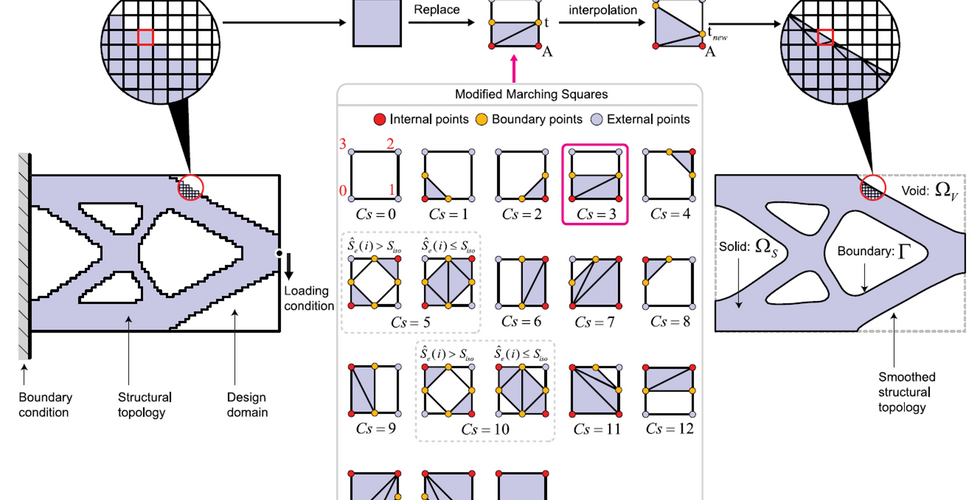[2022] Smoothing topology optimization results using pre-built lookup tables
- Jeff Lee

- Oct 11, 2022
- 1 min read
Li, Z., Lee, T.U., Yao, Y. and Xie, Y.M., 2022. Advances in Engineering Software, 173, p.103204. [Link]
Topology optimization techniques are typically performed on a design domain discretized with finite element meshes to generate efficient and innovative structural designs. The optimized structural topologies usually exhibit zig-zag boundaries formed from straight element edges. Existing techniques to obtain smooth structural topologies are limited. Most methods are computationally expensive, as they are performed iteratively with topology optimization. Other methods, such as post-processing methods, are applied after topology optimization, but they cannot guarantee to obtain equivalent structural designs, as the volume and geometric features may be changed.
This study presents a new method that uses pre-built lookup tables to transform the shape of boundary elements obtained from topology optimization to create smoothed structural topologies. The new method is developed based on the combination of the bi-directional evolutionary structural optimization (BESO) technique and marching geometries to determine structural topologies and lookup tables, respectively. An additional step is used to ensure that the generated result meets a target volume. A variety of 2D and 3D examples are presented to demonstrate the effectiveness of the new method. This research shows that the new method is highly efficient, as it can be directly added to the last step of topology optimization with a low computational cost, and the volume and geometric features can be preserved in smoothed topologies. Finite element models are also created for original and smoothed structural topologies to show that the structural stiffness can be significantly enhanced after smoothing.









Comments